Summer plans have been made, the dates have been booked, and you are counting down the days until your expedition with Outward Bound begins. While some of the greatest moments on an Outward Bound expedition are often unexpected, there are a few things you can count on. With these key components down, you can confidently prepare yourself for one of the greatest adventures of all time and relish in the life-changing moments that are sure to come.
Outward Bound:
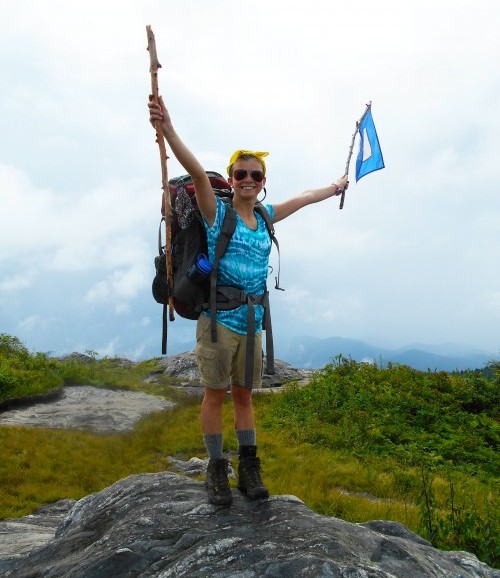
Celebrating what it means to be “outward bound” at the summit in the Blue Ridge Mountains.
To be “outward bound” means to leave the shelter of the harbor for the open sea. On an Outward Bound course, it means leaving comfort zones, putting fears aside, and discovering what is possible.
Experiential Education:
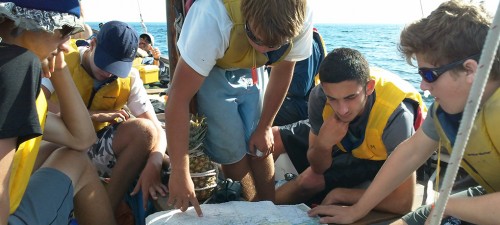
Students learn through experiential education on course with Outward Bound.
Experiential education focuses on direct experience and reflection as a way to increase knowledge, develop skills and clarify values. During your expedition you will experience this first-hand by learning skills in the wilderness, reflecting on course activities and transferring lessons learned to other areas of life.
Gear:
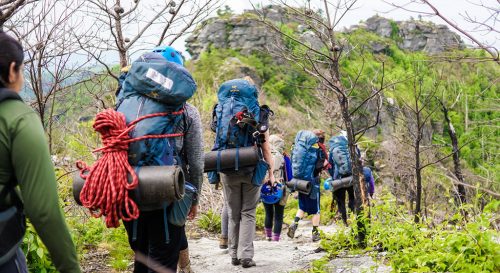
Students backpacking with their gear on course with Outward Bound.
Gear refers to all of the clothing, shoes and equipment you will need for your Outward Bound expedition. Your course advisor will provide you with information on gear that will be provided by Outward Bound (such as tents, sleeping bags and backpacks) as well as a comprehensive list of what you’ll need to bring with you. These lists are created specifically for the geographical area you’ll be traveling in – and for the activities you’ll be doing during your course. Whether you purchase your gear at a local sporting goods store or a navy supply store; bring your list, pay attention to the details and ask plenty of questions. With the right gear, you’ll be comfortable, well-prepared and ready for anything.
Base Camp:
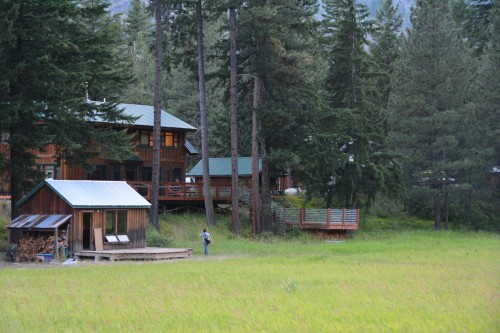
The Northwest Outward Bound School base camp in Mazama, WA
Base camp is where you will arrive for your Outward Bound expedition. A few days are spent here preparing for your expedition before you say goodbye and journey into the wilderness. As your expedition comes to an end, your crew will make their way back to the base camp and enjoy a well deserved shower, meal and celebration.
Duffle Shuffle:
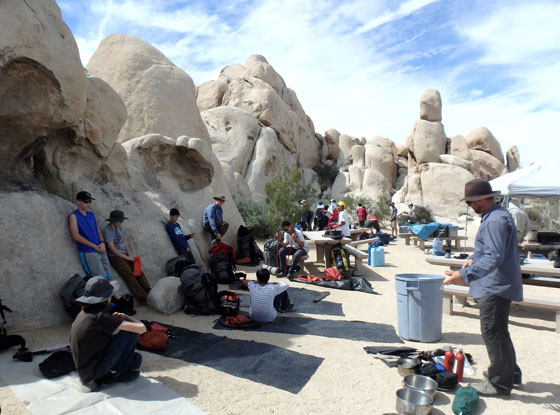
A crew sorts through their gear during a backpacking expedition in Joshua Tree, California.
The duffle shuffle occurs at the beginning of every Outward Bound course. Instructors work individually with students to help them decide what should go into their expedition pack and what should stay at the base camp. Any luggage that stays behind will be secured in a locked, dry and safe location.
Group gear like climbing equipment, food, tarps, kitchen equipment and first aid supplies will also be divided up amongst group members during this time.
Training – Main – Final:
You will often hear Instructors and Program Directors talk about your course in three phases: Training, Main and Final.
Training Phase: Instructors will start off the course by training and teaching you and your crew everything you need to know about wilderness travel, risk management, and how to effectively work together as a team.
Main Phase: The Instructors begin to hand over technical responsibility for day to day while continuing to teach more advanced skills, and coach the finer points of leadership and teamwork. The intent is to provide a safety net for you and your crew as you continue to develop decision-making and risk management skills.
Final Phase: Near the end of course, when you and your crew have demonstrated the requisite leadership, problem-solving and technical skills, your Instructors may step back into an observational role and have you and your crew take charge of the decision-making and technical operation of the expedition.
Leave No Trace:
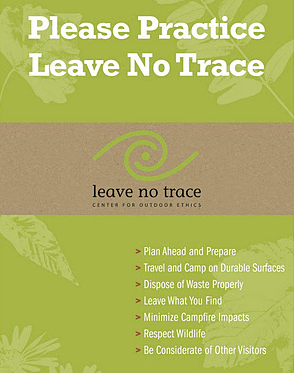
The 7 Leave No Trace Principles
Leave No Trace™ is a set of outdoor ethics promoting conservation in the outdoors. During your expedition, you will practice these ethics though environmental stewardship; which is developed to nurture, respect and promote a feeling of responsibility for whatever environment you’re traveling in.
Natural History:
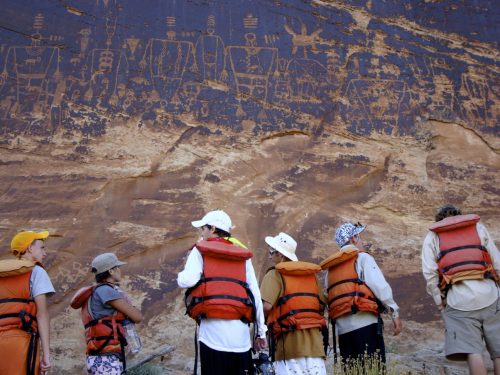
Students explore the petroglyphs in Canyon Country during a Southwest expedition.
During your expedition you will have the chance to learn more about the environment you are immersed in. Instructors will familiarize you with the flora and fauna, geology, weather systems and human history of the areas. At night you will be introduced to astronomy, constellations and some of their associated myths.
Navigator:
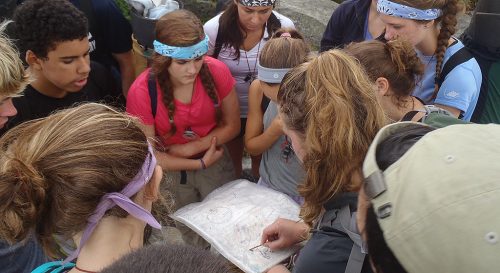
Navigating on course with Outward Bound
During the main phase of your Outward Bound expedition, each member of your crew will be assigned as the navigator for the day. The navigator is responsible for leading the group in that day’s expedition; whether it’s by way of trails, waterways or canyons.
Circle Up:
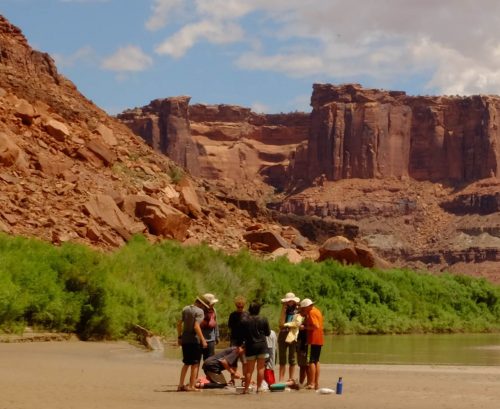
Circle up in the Southwest. Photo by Leonard McGirr
Circle up is a phrase used throughout an Outward Bound expedition as a signal for your crew to come together. This informal meeting might take place by the campfire after a long day, on the side of a trail for an impromptu wilderness lesson, or the morning before your crew embarks on a peak attempt.
Solo:
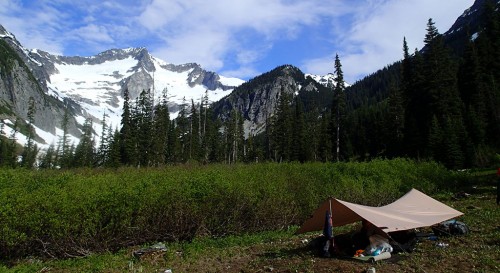
A student’s Solo campsite during the North Cascades Alpine Backpacking expedition. Photo by Jaclyn Long.
The solo is a period of time near the end of an Outward Bound course where each student is assigned a secluded campsite within a designated area. It is a unique opportunity to spend time alone, reflect on the expedition, practice camp craft skills and plan for the future. Students are given all of the necessary gear, food, water and skills to complete this portion of the course. Solo sites are selected to offer as much solitude as possible, but within earshot of other group members.
Personal Challenge Event:
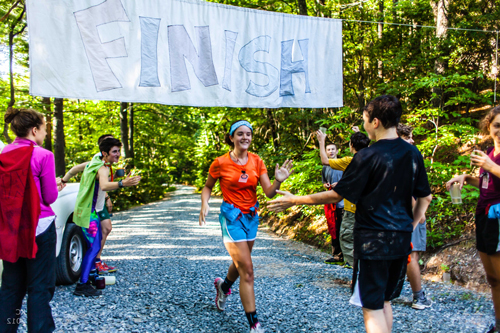
A student completes her personal challenge event in the Blue Ridge Mountains.
The Personal Challenge Event is a culmination of all the lessons and skills learned during an Outward Bound course. Each Personal Challenge Event is tailored to fit the current conditions and participants on course, and may take the form of a run or team challenge.
Pin Ceremony:
At the completion of your expedition, your Instructors and teammates will gather for a ceremony to celebrate your achievements and to say goodbyes. As a symbol of achievement, every graduate will receive a compass rose pin, which represents all you have accomplished and how far you’ve come. After departing from your Outward Bound course, you will return home tired and dirty, but with the knowledge that you are capable of more than you ever thought possible.
Bonus term, Groover:
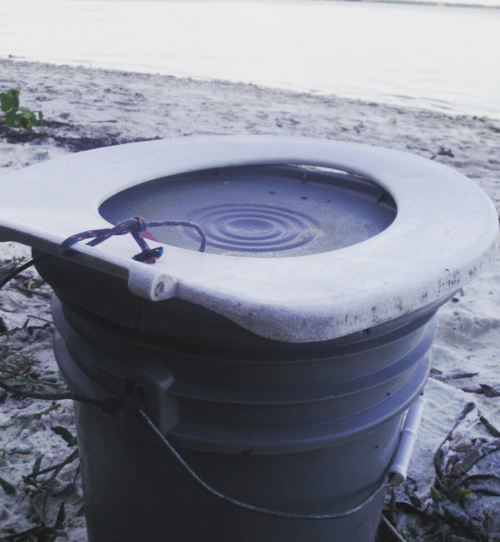
A groover setup with an ocean view on course in the Florida Everglades
A portable toilet used for expedition-style camping trips and during your Outward Bound expedition. The Groover is set up in a private area of each campsite and offers you an unexpectedly freeing experience.
Course Area Glossary
Outward Bound has access to countless world-renowned national parks, forests and trails; wild rivers; unpolluted natural lakes; and backcountry areas. The areas we go are endless, and sometimes hard to keep track of. See below for a glossary of our course areas located throughout the country:
Boundary Waters
Established in 1964, the Boundary Waters Canoe Area Wilderness in Minnesota (BWCAW) is a labyrinth of lakes and rocks that has been specifically protected as a true American wilderness. No roads, power lines, or motorized craft may enter its borders; therefore the Boundary Waters wilderness has changed little since its unveiling when the glaciers melted 10,000 years ago. Over 1 million acres in size, the BWCAW extends nearly 150 miles along the Canadian border and contains portage-linked lakes and streams, interspersed with islands, forests and crags. The Boundary Waters’ 1,200 miles of paddling routes offer outstanding opportunities for solitude, remoteness, teamwork, adventure and challenge.
High Sierras
The High Sierras are part of the Sierra Nevada Range, which is located mainly in California and is the largest continuous mountain range in the contiguous United States. Its large expanse of wilderness area extends over 400 miles from north to south, and is home to national parks, wilderness areas and national monuments. Among these areas includes Yosemite, Sequoia, and Kings Canyon National Parks. This area is also known for some of the most famous alpine climbing and backpacking routes in the United States.
Southwest
Outward Bound Southwest expeditions take place among a mosaic of canyons, rivers and mountains set in the Utah landscape. Specific areas include Canyon Country; a vast network of sandstone canyons composed of alcoves, buttes, towers, and arches. La Sal and Uinta Mountains; known for their aspen groves, hidden alpine lakes, and incredible views. San Juan River, Green River and the Colorado River; three major whitewater rivers that wind through towering canyons and plateaus rich with world renowned archaeological sites featuring petroglyphs and ancient cliff dwellings.
Northern Appalachian Mountain Range
The mountains of western Maine and northern New Hampshire comprise the northern end of the Appalachian mountain range. Within this region, the White Mountain National Forest, the Appalachian Trail, the Carter-Mahoosuc Range, the Grafton Loop Trail and the Caribou-Speckled Mountain Wilderness all offer classic backpacking terrain. These spruce-fir and hardwood forests are home to hundreds of species of birds as well as moose, deer and black bear. Rushing waterfalls, clear twisting streams and spectacular views from rocky summits reward backpackers ready for adventure.
Blue Ridge Mountains
The Blue Ridge Mountains in North Carolina are some of the oldest mountains in the world. While the mountains themselves formed over 250 million years ago, some of the rocks that underlie the region are over a billion years old. This area is home to beautiful rushing rivers, hundreds of waterfalls and some of the highest peaks in the Eastern United States. Outward Bound students can expect to share the wilderness with over 700 different kinds of trees, more than 50 types of mammals, 150 different types of birds and over 50 species of amphibians.
The North Cascades
The North Cascades are a section of the Cascade Range located in Washington. Known as the “American Alps” for their rugged beauty and glaciated peaks, they remain some of the wildest and untamed wilderness in the United States. The North Cascades host the greatest concentration of glaciers in the “Lower 48” and are full of high mountain meadows peppered with wildflowers.
If you haven’t yet signed up for a course, you are missing the first step! A life-changing summer experience awaits you. To find the wild and wonderful place that’s right for you, go HERE or call 866.467.7651 to speak with an admissions advisor today.
OTHER POSTS YOU MAY LIKE
Read More
Read More
Read More




